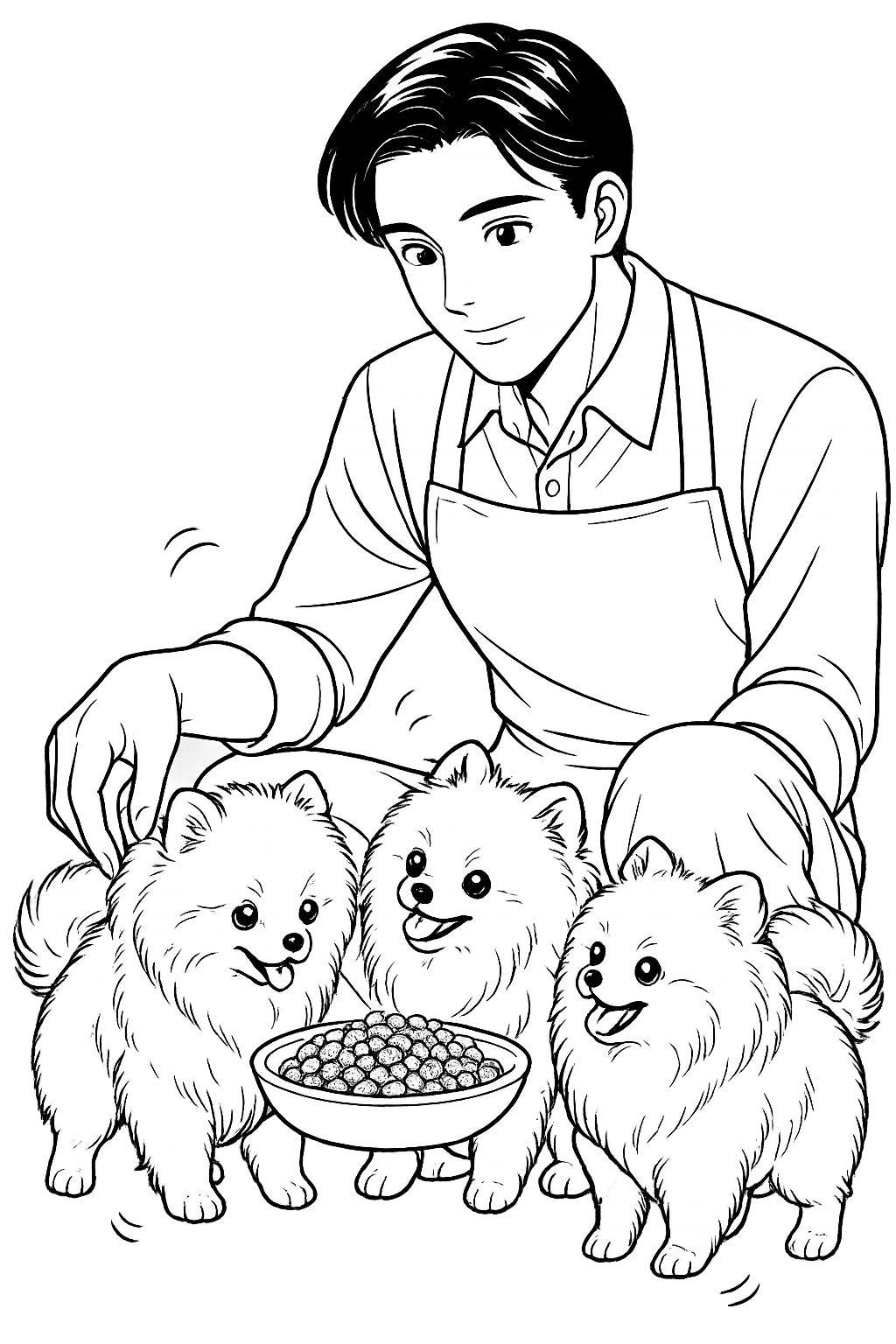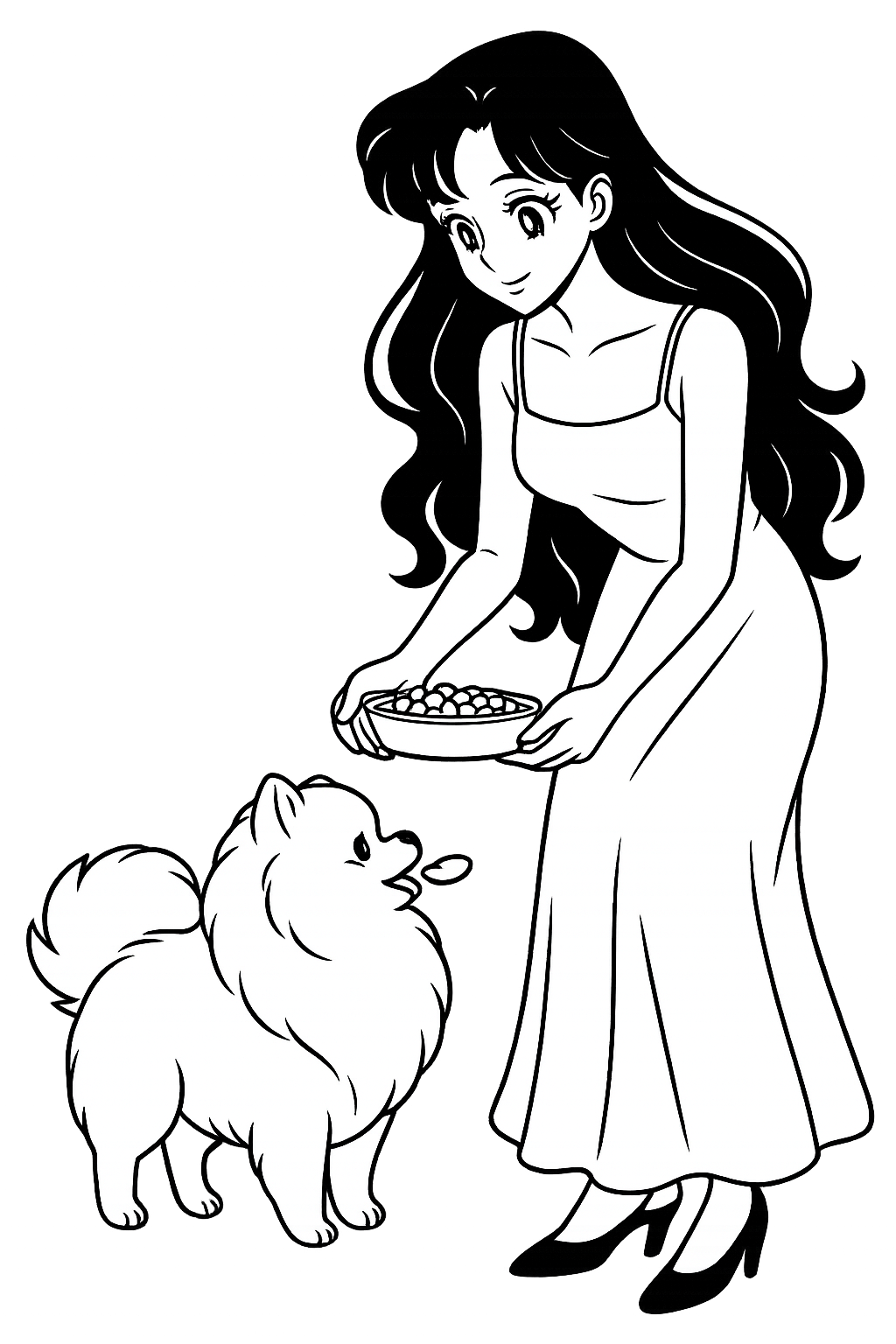CARE — DIET
Table of Contents
Introduction
Puppyhood
Adulthood
Senior Years
Raw Diets
Grain-Free Diets
WSAVA Principles
WSAVA Guidelines
WSAVA Diet Guidelines for YOUR DOG
Pomeranians are a toy‐breed with unique metabolic demands and predispositions—hypoglycemia in puppies, tracheal collapse, dental overcrowding, adult obesity, and patellar luxation. The World Small Animal Veterinary Association (WSAVA) Global Nutrition Guidelines offer a framework for tailoring diets that support growth, maintenance, and healthy aging in Pomeranians, mitigating breed‐specific issues when applied judiciously.
Puppyhood: Preventing Hypoglycemia & Supporting Development
Pomeranian puppies burn energy rapidly but have small stomachs and limited glycogen reserves, making them prone to hypoglycemia. WSAVA recommends:
High‐Energy, Nutrient‐Dense Diets: Formulated for growth (puppy formulas) providing ~2× adult energy per kg body weight until ~40% adult size, then tapering to ~1.6× and 1.2× respectively.
Frequent, Small Meals: 3–4 feedings daily to maintain stable blood glucose.
Balanced Calcium: Phosphorus (Ca:P): A ratio of ~1.2–1.4:1 supports skeletal health without overloading developing bones.
DHA & Vitamin E: Essential for neural, visual, and immune development.
Please see our Care — Puppy page for more in-depth information about caring for your puppy.
Adulthood: Managing Energy & Supporting Respiratory Health
Adult Pomeranians are susceptible to obesity, which exacerbates joint stress and tracheal collapse, plus chronic cough from tracheal ring weakening. WSAVA adult maintenance guidelines advise:
Caloric Targeting: Use WSAVA’s calorie tables (e.g., 130 kcal × BWkg^0.75 for active adults) and adjust for individual activity.
Portion Control: Larger portions drive overconsumption; studies show dogs eat more when served extra food.
High‐Quality Protein & Moderate Fat: Maintain lean muscle mass and skin/coat health; avoid excess fat to limit weight gain.
Joint & Airway Support: Include glucosamine/chondroitin for patellar luxation risk; keep body condition ideal to reduce tracheal pressure and cough severity.
Omega-3 Fatty Acids: EPA/DHA (≥0.1% diet DM) to modulate inflammation in joints and airway tissues.
Senior Years: Preserving Muscle, Cognition & Dental Health
Seniors face reduced metabolism, sarcopenia, dental attrition, and cognitive slowing. WSAVA suggests:
Adequate Digestible Protein: ≥25% of kcal from high‐biological‐value protein prevents muscle wasting.
Calorie Reduction with Nutrient Density: Decrease total kCal by ~20% while maintaining micronutrients to avoid obesity.
Antioxidants & L-Carnitine: Support cognitive function and counter oxidative stress.
Soft or Moist Foods: Accommodate worn teeth and encourage intake.
Prebiotics/Probiotics: To maintain gut microbiome balance and nutrient absorption.
Raw Diets: Weighing the Risks
While some advocate for raw diets, it’s important to consider potential risks:
Pathogen exposure: Raw meats can harbor harmful bacteria like Salmonella and Listeria, posing health risks to both pets and humans.
Nutritional imbalances: Without proper formulation, raw diets may lack essential nutrients, leading to deficiencies.
Consulting with a veterinarian before transitioning to a raw diet is crucial to ensure safety and nutritional adequacy.
Grain-Free Diets: Understanding the Concerns
Grain-free diets have gained popularity, but recent studies have raised concerns:
Heart health implications: The FDA has investigated potential links between grain-free diets and canine dilated cardiomyopathy (DCM).
Nutritional considerations: Grains can be a valuable source of nutrients; eliminating them without suitable alternatives may lead to deficiencies.
It’s essential to evaluate the necessity of grain-free diets on a case-by-case basis, considering the individual dog’s health and dietary needs with your veterinarian.
Evidence Supporting WSAVA Principles
Digestive & Metabolic Differences: Small breeds digest nutrients differently and have distinct amino acid profiles, underscoring the need for breed‐tailored diets.
Feeding Frequency: Once‐daily feeding links to health benefits in adult dogs, but toy breeds benefit from multiple meals to stabilize glucose.
Tracheal Collapse Management: Weight control and meal size reduction alleviate cough severity in small breeds like Pomeranians.
-
WSAVA Global Nutrition Guidelines
World Small Animal Veterinary Association, 2020.Calorie Needs for Healthy Adult Dogs
WSAVA Nutrition Committee, July 2020.Bray EE, Zheng Z, Tolbert MK, McCoy BM, Dog Aging Project Consortium, Kaeberlein M.
“Once‑daily feeding is associated with better health in companion dogs.” GeroScience. 2022.
(PMID: 35484470; PMCID: PMC9213604).Teng KPH, Jolley KD, Stewart AM, et al.
“Metabolic differences between dogs of different body sizes.” PLoS One. 2017.National Research Council (NRC).
Nutrient Requirements of Dogs and Cats, 2006.FDA Center for Veterinary Medicine. “Managing canine coat and skin health through nutrition.” FDA Health Alert, 2021.
FDA Veterinary Advisory Committee. “Investigation into potential link between grain‑free diets and canine dilated cardiomyopathy.” Reports from 2019 and 2022.


